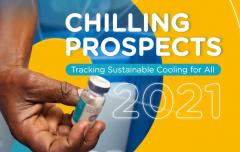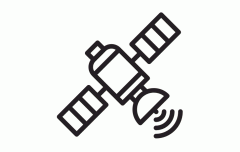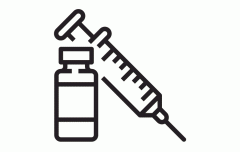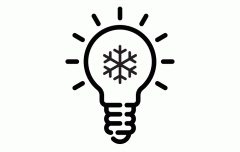Global access to cooling: Populations at risk
Key messages
- Across the 54 high-impact countries, at least 3.43 billion people still face cooling access challenges, with global risks amplified by an additional 50 million people at high risk in 2021.
- The number of urban poor at high risk has grown by approximately 19 million from 714 to 732 million.
- The rural population has grown by 31 million from 324 million to 355 million.
- The lower-middle income population increased from 2.17 billion in 2020 to 2.34 billion in 2021.
Rural poor - 355 million
Approximately 355 million people lack access to electricity and are likely to live in extreme poverty. Many of the rural poor are likely to engage in subsistence farming but lack access to an intact cold chain that would enable them to sell their products further afield at a higher price. There may also be a lack of medical cold chains in rural poor communities, putting lives at risk from spoiled vaccines.
Figure 1.2: The rural poor in 2021
The number of those at high risk in poor, rural areas rose by 31 million from 324 million people in 2020 to 355 million people in 2021. This increase is due primarily to the poverty impact of the COVID-19 pandemic, which would have placed financial burdens on households and spending constraints on governments to deliver social services and incentivize energy access. The three countries with the highest number of rural poor at risk in 2021 are India, Nigeria and Bangladesh, with each country experiencing a gain in the number of rural poor as high as 21 percent for India and 12 percent for Nigeria. In India, the access gap for the rural poor has been updated to reflect a steady poverty gap in rural areas. Despite steady strides in delivering energy access, electricity alone has not enabled those living in poverty to access most sustainable cooling solutions.
In Africa, 25 countries have experienced a growth rate in their rural poor populations of 10 percent or more since 2018: Algeria, Angola, Benin, Burkina Faso, Cameroon, Chad, Republic of Congo, Cote d’Ivoire, Egypt, Eswatini, Gambia, Ghana, Guinea, Guinea-Bissau, Liberia, Malawi, Mali, Mauritania, Morocco, Mozambique, Niger, Senegal, Sudan, Togo and Uganda. While their populations of rural poor are relatively small, many countries in Latin America experienced increases of more than 10 percent in 2021: Argentina (20,600 person increase), Bolivia (36,200 person increase), Brazil (451,000 person increase), Dominican Republic (1,800 person increase), Paraguay, (8,700 person increase), and Peru (51,400 person increase).
Figure 1.3: The rural poor since 2011 (millions)
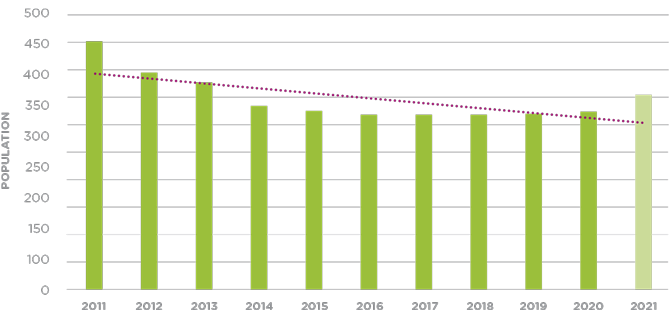
Cooling access gaps for the rural poor do not factor in the additional risks linked to the COVID-19 vaccine cold chains. Rural populations in a range of different climates and at different income levels will experience such challenges. For an analysis of the number of rural dwellers who may have challenges receiving a COVID-19 vaccine due to a lack of reliable medical cold chains, please see Chapter 3.
Table 1.2: Top 10 countries with rural poor at risk
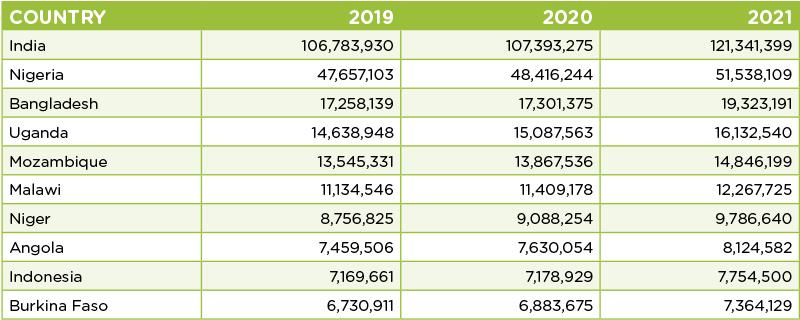
Urban poor - 732 million
Approximately 732 million people may have some access to electricity, but the quality of their housing is likely very poor, and their income may not be sufficient to purchase or run a fan. They may own or have access to a refrigerator, but intermittent electricity supplies may mean that food often spoils and there is a high risk of poor nutrition or food poisoning.
Figure 1.4: The urban poor in 2021
Figure 1.5: The urban poor since 2011 (millions)

Table 1.3: Top 10 countries with urban poor at risk
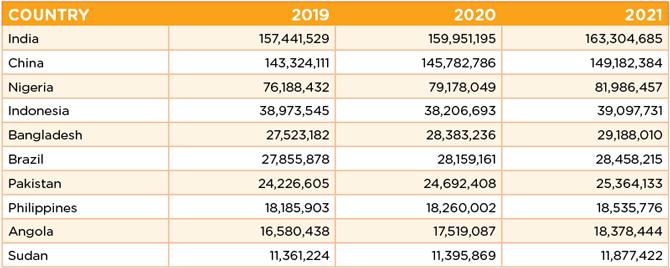
The number of those living in poor urban settings at highest risk grew by 19 million, from 714 million people to 732 million people. [10] China and India accounted for approximately 36 percent of the growth, or 6.8 million people. None of the 54 high-impact countries saw a decrease in their number of urban poor. Increases in this population generally ranged between 1 and 6 percent, with the exception of Algeria, which saw a 16 percent increase in the number of rural poor at risk, and the Republic of Congo, which saw a 15 percent increase.
While the COVID-19 pandemic played a significant role in 2021, the number of urban poor at high risk has been growing since 2015 due to urbanization trends, meaning that in hot cities, the pandemic exacerbated an already challenging situation.
Lower-middle income - 2.34 billion
Approximately 2.34 billion people represent an increasingly affluent lower-middle class that is on the brink of purchasing the most affordable air conditioner or refrigerator on the market. Limited purchasing choices available to this group favour cooling devices that are likely inefficient and could cause a dramatic increase in energy consumption and associated GHG emissions.
Figure 1.6: The lower-middle income in 2021
The lower-middle income population represents an increasingly affluent lower-middle class that is on the brink of purchasing the most affordable air conditioner or refrigerator on the market. Limited purchasing choices available to this group favour cooling devices that are likely inefficient and could cause a dramatic increase in energy consumption and associated GHG emissions.
The lower-middle income population is the estimated segment of the population outside of rural and urban poverty living on less than USD 10.01 per day. There was a significant increase in this segment between 2020 and 2021 of approximately 164 million people, reversing a trend that had seen the number of lower middle income at risk continually decreasing since 2012. There are multiple factors that are likely to have influenced this in 2021, including the number of people who became exposed to poverty as a result of the COVID-19 pandemic and overall population growth. Significant increases were seen in China, with eight other countries experiencing growth in their lower-middle income populations of over 10 percent: Guinea, Mauritania, Mozambique, Namibia, Senegal, Somalia, South Sudan and Sri Lanka.
Figure 1.7: The lower-middle income since 2011 (millions)
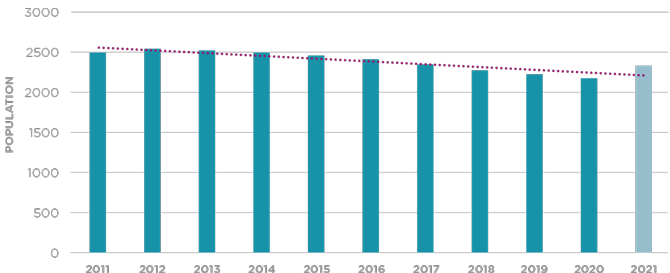
Table 1.4: Top 10 countries with lower-middle income populations at risk
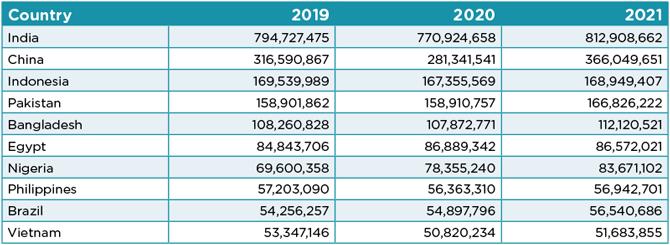
Middle income - 1.38 billion
Approximately 1.38 billion people typically own an air conditioner and refrigerator and may be able to afford more efficient ones. They may also be able to move to better designed, more efficient housing and working environments, where they might also make conscious choices not to own an air-conditioning unit or minimize its use.
Figure 1.8: The middle income in 2021
The middle-income segment of the population lives on between USD 10.01 and USD 20 per day. In 2021 there was a decrease in the middle-income population of approximately 140 million people compared to 2020. In Sub-Saharan Africa, 20 countries saw decreases in their middle-income populations of over 10 percent: Benin, Burkina Faso, Cameroon, Chad, Republic of Congo, Cote d’Ivoire, Eritrea, Eswatini, Gambia, Ghana, Guinea, Guinea-Bissau, Mauritania, Mozambique, Namibia, Nigeria, Senegal, South Sudan, Togo and Uganda.
By volume, the decrease in the overall middle-income population was driven by China, (-82.1 million) and India (-43.2 million). While a decrease in the middle-income population can likely be attributed to a general drop in income and higher exposure to poverty resulting from the COVID-19 pandemic, it can also be a result of increased incomes of some previously living on between USD 10.01 and USD 20 per day.
Figure 1.9: The middle income since 2011 (millions)
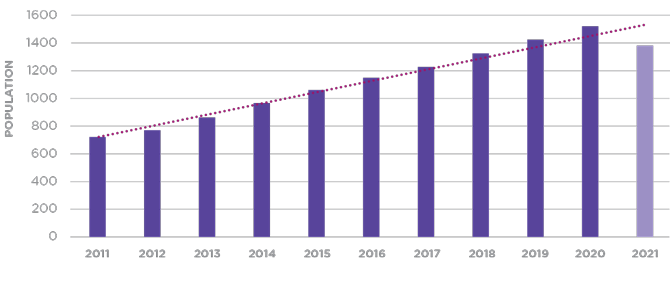
Notes and references
Note: figures may not add up due to rounding. The number of urban poor at high risk has grown from 713.5 million to 732.3 million, a difference of 18.8 million.
Algeria, Angola, Argentina, Bangladesh, Benin, Bolivia, Brazil, Burkina Faso, Cambodia, Cameroon, Chad, China, Congo, Rep., Cote d'Ivoire, Djibouti, Dominican Republic, Egypt, Eritrea, Eswatini, Gambia, The; Ghana, Guinea, Guinea-Bissau, India, Indonesia, Iran, Iraq, Lao PDR, Liberia, Malawi, Mali, Mauritania, Morocco, Mozambique, Myanmar, Namibia, Niger, Nigeria, Pakistan Papua New Guinea, Paraguay, Peru, Philippines, Senegal, Somalia, South Sudan, Sri Lanka, Sudan, Thailand, Timor-Leste, Togo, Uganda, Vietnam, Yemen


